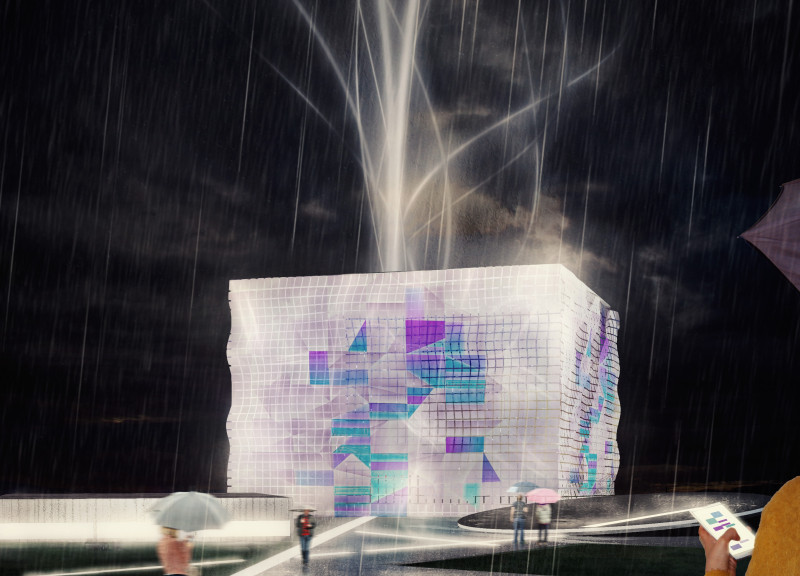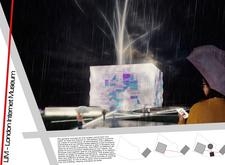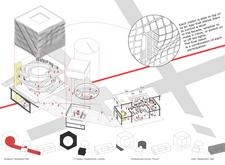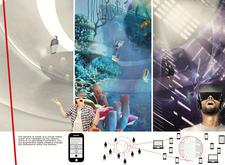5 key facts about this project
The architectural design of the London Internet Museum encapsulates a vision where technology and user input converge to create an environment that is as fluid and adaptable as the Internet itself. The museum’s function extends beyond that of a traditional exhibition space; it serves as a hub for learning, community engagement, and exploration of digital narratives. Visitors are encouraged to delve into the interactive aspects of the museum, which allows them to engage in a manner that reflects their personal interests and perspectives. This commitment to user interaction is highlighted through features such as an innovative mobile application that allows visitors to modify the building's facade, presenting a unique visual experience each time they visit.
The museum’s exterior is defined by a series of translucent panels that create a dynamic facade. These panels are designed to diffuse light and evoke the fluid characteristics of digital data. The choice of materials, including concrete and glass, establishes a modern aesthetic while providing structural integrity. Glass elements are intentionally integrated to enhance transparency and foster connections between the interior spaces and the bustling urban environment outside. The design approach emphasizes a seamless transition between the physical museum and the virtual world, reinforcing the theme of globalization inherent to the Internet.
Internally, the layout of the London Internet Museum is meticulously organized to enhance visitor experience and encourage exploration. Dedicated exhibition halls host rotating displays, offering fresh narratives and insights into Internet history and culture. These areas are complemented by flexible spaces for workshops and educational programming, creating a multidisciplinary environment where technology meets community learning. The inclusion of social spaces, such as cafes and collaboration areas, promotes interaction among visitors, echoing the social aspects of digital communication.
A notable aspect of the design is the incorporation of The Sphere, a virtual reality area that stands as a unique feature within the museum. This space allows users to immerse themselves in curated digital experiences, modified by their inputs, further illustrating the museum's commitment to an evolving interface between technology and audience engagement. The Sphere embodies the principle of adaptability, echoing the ever-changing nature of digital content and the ways in which it prompts ongoing dialogue.
The London Internet Museum is strategically positioned within London, a city known for its cultural and technological advancements. This location enhances the relevance of the project, placing it amidst a vibrant context of innovation and digital discourse. The design resonates with its surroundings, responding to the urban fabric while contributing to the ongoing conversation about the interplay of technology and daily life.
In summary, the London Internet Museum stands as an architectural exploration of how the Internet shapes our world. Its design promotes interaction and community engagement while reflecting the fluid nature of digital culture. The innovative use of materials, the dedication to adaptive spaces, and the emphasis on visitor participation set this project apart as a noteworthy addition to the architectural landscape. For those interested in a deeper understanding of this project, including architectural plans, sections, and ideas, exploring its presentation will provide further insights into the design and its implications within our evolving digital society.


























